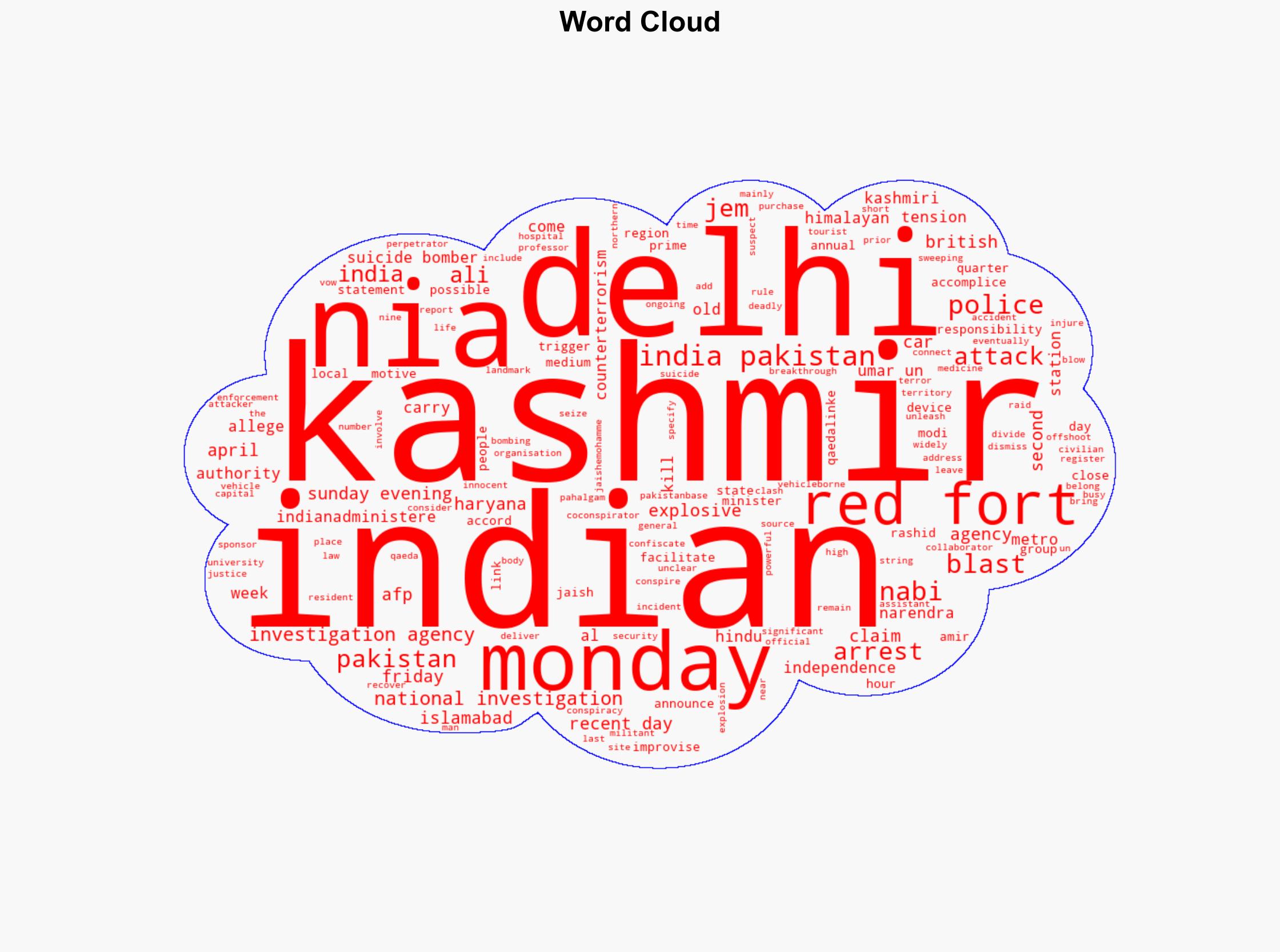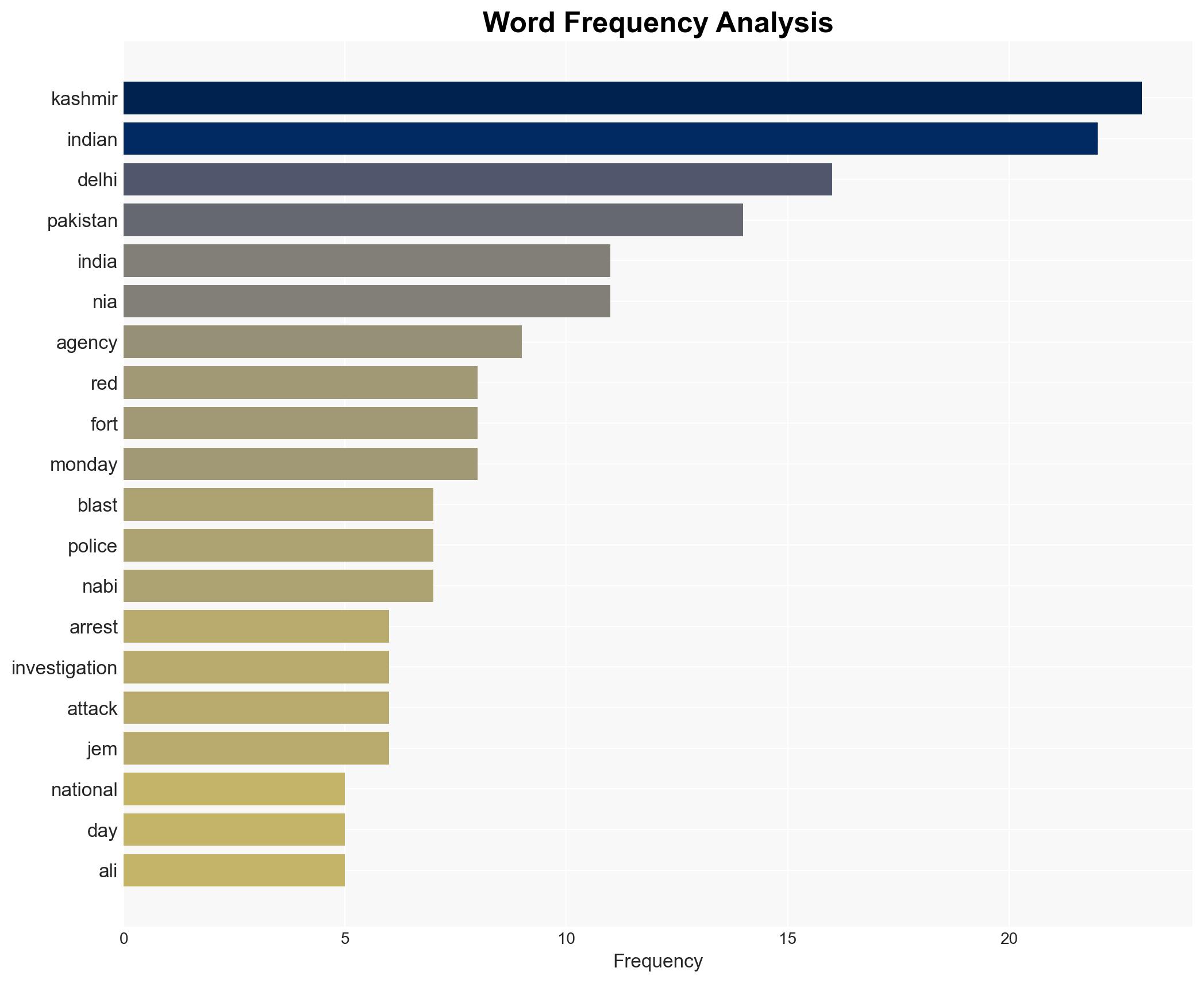Man arrested over deadly Delhi suicide bombing – ABC News (AU)
Published on: 2025-11-16
AI-powered OSINT brief from verified open sources. Automated NLP signal extraction with human verification. See our Methodology and Why WorldWideWatchers.
Intelligence Report:
1. BLUF (Bottom Line Up Front)
The most supported hypothesis is that the suicide bombing at Delhi’s Red Fort was orchestrated by a Pakistan-based militant group, potentially Jaish-e-Mohammed (JeM), aiming to escalate tensions between India and Pakistan. Confidence level: Moderate. Recommended action: Strengthen intelligence-sharing with international partners and enhance security measures in high-risk areas.
2. Competing Hypotheses
Hypothesis 1: The attack was orchestrated by a Pakistan-based militant group, such as Jaish-e-Mohammed, to destabilize the region and provoke a response from India. This is supported by the arrest of individuals linked to Kashmir and the historical pattern of cross-border terrorism.
Hypothesis 2: The attack was a result of internal radicalization within India, possibly involving local extremist elements with grievances against the Indian government. This is supported by the involvement of individuals from Indian-administered Kashmir and the use of locally sourced materials.
Hypothesis 1 is more likely due to the historical context of cross-border terrorism and the involvement of individuals with potential links to Pakistan-based groups.
3. Key Assumptions and Red Flags
Assumptions: It is assumed that the arrested individuals are accurately identified as co-conspirators and that the NIA’s intelligence is reliable. It is also assumed that the motive is linked to geopolitical tensions.
Red Flags: The possibility of misinformation or disinformation from involved parties, particularly regarding the motives and affiliations of the attackers. The rapid identification and arrest of suspects could indicate a pre-determined narrative.
4. Implications and Strategic Risks
The attack could lead to increased military tensions between India and Pakistan, potentially escalating into cross-border skirmishes. There is also a risk of retaliatory attacks within India, targeting civilian and military infrastructure. Economically, heightened tensions could deter foreign investment and impact regional stability.
5. Recommendations and Outlook
- Enhance intelligence-sharing with international partners to track cross-border militant activities.
- Increase security measures in high-risk areas, particularly during national events.
- Engage in diplomatic efforts to de-escalate tensions with Pakistan.
- Best-case scenario: Successful prevention of further attacks and stabilization of regional tensions through diplomatic channels.
- Worst-case scenario: Escalation into military conflict between India and Pakistan, with significant civilian and economic impact.
- Most-likely scenario: Continued low-intensity conflict with sporadic attacks and ongoing diplomatic tensions.
6. Key Individuals and Entities
Amir Rashid Ali, Umar Un Nabi, Jaish-e-Mohammed (JeM).
7. Thematic Tags
Regional Focus, Regional Focus: South Asia, India-Pakistan Relations, Counterterrorism
Structured Analytic Techniques Applied
- Causal Layered Analysis (CLA): Analyze events across surface happenings, systems, worldviews, and myths.
- Cross-Impact Simulation: Model ripple effects across neighboring states, conflicts, or economic dependencies.
- Scenario Generation: Explore divergent futures under varying assumptions to identify plausible paths.
Explore more:
Regional Focus Briefs ·
Daily Summary ·
Support us
·





